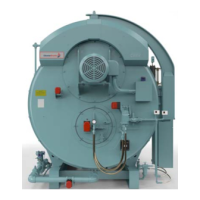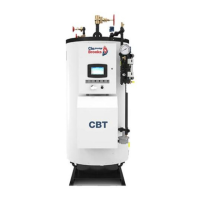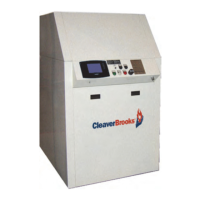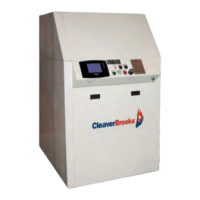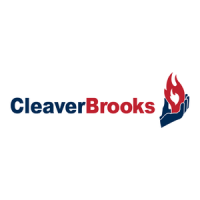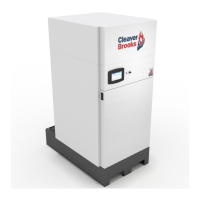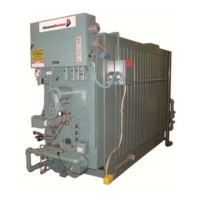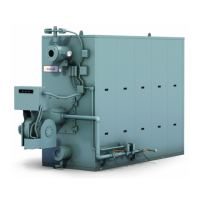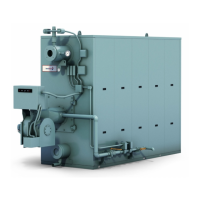Starting and Operating Instructions
5-10
750-368
CBEX Elite 100-1200 HP
5.8 — Control Operational Checks
Proper operation of the various controls should be verified and tested when the boiler is initially placed into ser-
vice, or whenever a control is replaced. Periodic checks should be made thereafter in accordance with a planned
maintenance program.
The operating limit control may be checked by allowing steam pressure or water temperature to increase until
the burner shuts down. Depending upon the load, it may be necessary to manually increase the firing rate to
raise steam pressure to the burner shutoff point. If the load is light, the header valve can be closed or throttled
until the pressure increases. Observe the steam gauge to check the cutoff pressure as the operating limit control
shuts the burner down. Slowly open the header valve to release steam pressure and check the cut-in setting as
the burner restarts. Check the modulating control for the desired operating pressure range. See chapter 6 for
instructions on the adjustment of controls.
The water temperature on a hot water boiler that may be operating at less than full load may be raised by man-
ually increasing the firing rate until the burner shuts down through the action of the operating limit control.
Observe the thermometer to verify the desired settings at the point of cutout and again when the burner restarts.
Return the manual-automatic switch to “automatic” and check the modulating control for the desired tempera-
ture range. See Chapter 6 for instructions on the adjustment of the controls.
Check the proper operation and setting of the low-water cutoff (and pump operating control, if used). For CB
Level Master, see manual 750-281.
Proper operation of the flame failure device should be checked at startup and at least once a week thereafter.
Refer to Chapter 8 for information on flame safety checks. Check the program relay’s annunciation for any sys-
tem failure. Observe the promptness of ignition of the pilot flame and the main flame.
It is advisable to check for tight shutoff of fuel valves. Despite the presence of strainers and other precautions, foreign
material in either new or renovated fuel lines may lodge under a valve seat and prevent tight closure. The situation is
especially true in new installations. Promptly correct any conditions causing leakage. Failure to follow these instruc-
tions could result in serious injury or death.
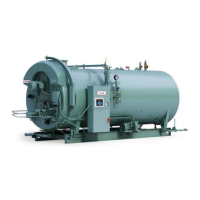
